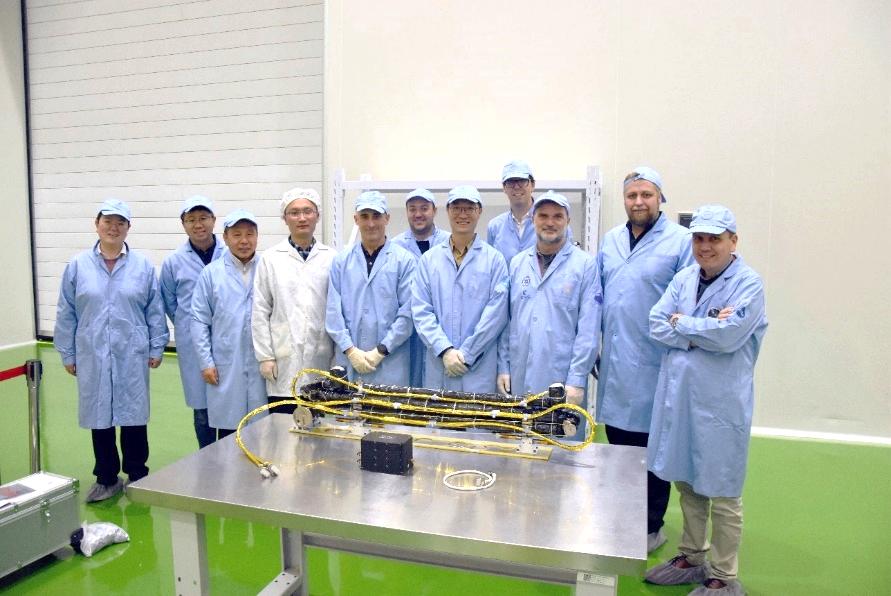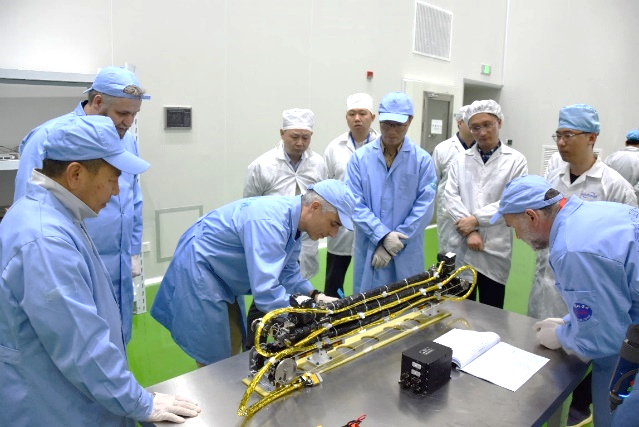The flight model of Magnetometer for SMILE mission has been delivered to ESA

Acceptance review of MAG flight model
SMILE, which stands for “Solar wind Magnetosphere Ionosphere Link Explorer”, aims to improve our understanding of the interaction between the Sun and the Earth.As an in-depth mission-level collaboration between European Space Agency (ESA) and the Chinese Academy of Sciences (CAS), it will provide unambiguous and quasi-continuous observations of key regions in the near-Earth space with both remote-sensing and in situ instruments. The spacecraft will carry four instruments: a soft X-ray imager (SXI), an ultraviolet aurora imager (UVI), a light ion analyser (LIA), and a magnetometer (MAG). SMILE will provide continuous observations in soft X-ray and ultraviolet wavelengths for up to 40 hours per orbit, including simultaneous images and video of the magnetosphere and the ionosphere, in particular the bow shock, magnetopause, the cusp regions, and the aurora.
Magnetic field investigation is part of the in-situ experiment which will measure the solar wind magnetic field and plasma, study its interaction with the magnetosphere, and identify the magnetic reconnection at the magnetopause through observations in the magnetosheath. Mounted on the outer end of a 3 m long deployable boom, the MAG consists of two independent tri-axial fluxgate sensor heads, sampling the vector magnetic field at a cadence of 20 vectors per second, over a wide dynamic range (512 - 65,536 nT) with a quantization of 24 bit or 0.008 nT in the most sensitive dynamic range and an accuracy better than 0.05%. MAG was developed by the Key Laboratory of Solar Activity and Space Weather of National Space Science Center (NSSC/CAS), and it was delivered to ESA for integration into the payload module.

MAG Flight model inspected by joint review panel

Pics of MAG FM, left: Boom and sensor head; right: Electronic box


